#fine art landscape 45
Text
Best Fine Art Landscape and Nature Photography In Arizona

Fine Art Landscape Prints
Strieby Photography in Arizona currently is selling large format fine landscape art prints ranging from sizes 16x24 to 40x60 with custom larger sizes available depending on the photo! You may find a few pieces that are odd sizes but my 4 main standard size prints for 90% of my photos are 16x24 24x36 32x48 40x60. We offer mostly "Open Edition" prints with a few and growing list of "Limited Edition" Trulife Acrylic Prints in FujiFlex Crystal Archive and Kodak Endura Metallic Paper that can be externally framed with 4" Roma Hand Made Italian Framing and 3" linen liners of your choice of color.
Strieby Photography also offers a more budget friendly but still very gorgeous Premium Plexiglass Acrylic Face Mount on the same high quality FujiFlex and Kodak Metallic paper prints that you get with the Trulife Acrylic Prints. If you are wanting just the print itself, Strieby Photography has all "Open Edition" prints in many sizes you can frame to your own liking! Maybe it's a beautiful metal print your looking for and we offer the very best available today with ChromaLuxe metal prints that have the best in image brilliance, archival qualities, and durability!
#Fine Landscape Photography 3#Arizona Landscape Photographers 13#Fine landscape prints for sale 25#Acrylic Landscape prints 39#fine art landscape photography 32#fine art landscape 45
1 note
·
View note
Text
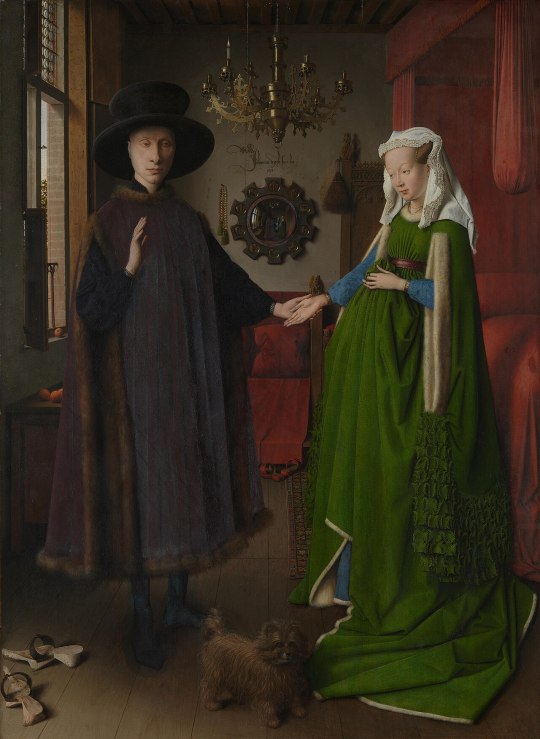
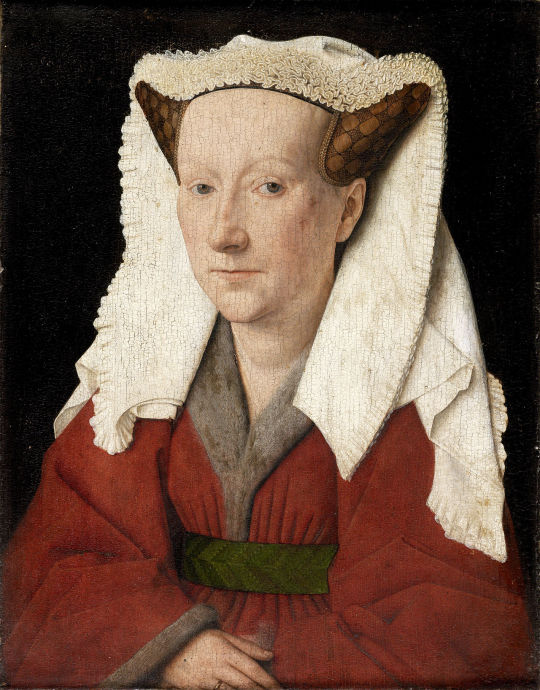
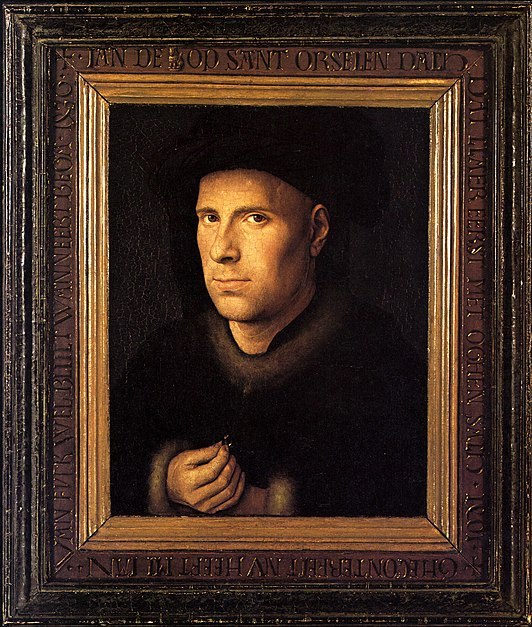

Differences Between the Southern and Northern Renaissance: A Study Through Jan van Eyck's "Portrait of a Man" (self portrait?)"
Written by ArtZoneStuff, 2024
The Renaissance, a period of cultural rebirth and revival of classical learning, manifested differently in the southern and northern regions of Europe. While both regions shared a common interest in humanism, art, and science, the way these ideas were expressed varied significantly due to differing cultural, social, and economic contexts.
The Southern Renaissance, centered in Italy, emphasized classical antiquity, proportion, perspective, and human anatomy. Artists like Leonardo da Vinci (1452-1519), Michelangelo (1475-1564), and Raphael (1483-1520) focused on idealized beauty, harmony, and balanced compositions.
In contrast, the Northern Renaissance, which flourished in regions such as the Netherlands, Germany, and Flanders, focused more on meticulous detail, naturalism, and domestic interiors. Northern artists like Jan van Eyck (1390-1441), Albrecht Dürer (1471-1528), and Hieronymus Bosch (?-1516) were known for their detailed and realistic depictions of nature, landscapes, and everyday life. Their work often contained rich symbolism and a focus on surface textures and fine details.
Jan Van Eyck's self portrait
Jan van Eyck's "Portrait of a Man" (Appendix 1), also known as his Self-Portrait from 1433, is a small-scale Dutch portrait measuring 25.9 x 33.1 cm (Google Arts and Culture, n.d.). The man in the painting emerges from a dark background, with his body depicted in three-quarter view. On his head, he wears a red chaperon, often mistaken for a turban, styled upward rather than hanging down (Nash, 2008, p.154). His dark fur-lined garment resembles the attire in "The Arnolfini Portrait" (Appendix 2), indicative of wealth during an era when textiles were extremely costly (ArtUK, 2019). His detailed face features a faint stubble, white highlights in his eyes and on his cheekbones, non-idealized features such as wrinkles and veins on his forehead, showcasing the Northern realism (Hall, 2014, p.44).
As described by the English art historian James Hall, the painting appears almost fleeting and alive - with the gaze seeming to capture the viewer before the face, and just like that, the penetrating stare turns away, perhaps followed by the light streaming from the right (Hall, 2014, p.43). The portrait conveys that the artist scrutinizes everything closely, including himself, without losing sight of the bigger picture (Hall, 2014, p.43). All these naturalistic details clearly indicate a Flemish painting.
The work is considered a self-portrait due to the frame. Jan van Eyck often used frames he designed and painted to enhance understanding and add meaning to his works (Hall, 2014, p.43; The National Gallery, 2021, 4:45-5.15). The gilded original frame of "Portrait of a Man" is crucial for interpreting the piece. Inscribed at the top of the frame is Jan van Eyck’s motto: "Als Ich can," translated to English: "As I can." At the bottom is his signature, and the date in Roman numerals: October 21, and in Arabic numerals, the year 1433. This results in the inscription: "Jan van Eyck made me on October 21, 1433" (Hall, 2014, p.43). He capitalizes the "I" in "Ich," playing on the pun Ich/Eyck. The motto can be interpreted as either boastful, "As I can," or modest, "As best as I can" (Hall, 2014, p.43).
The inscription highlights the relationship between words and image, indicating his awareness of his talent. His skill in painting surpasses that of a craftsman, which painters in this period was considered as. "As I can" suggests he is the only one capable of achieving such stylistic naturalism which cannot be imitated (The National Gallery, 2021, 5:10-5:58). "Jan van Eyck made me" also reflects a high degree of self-awareness, as he claims a painting of this quality, emphasizing that he created it and is conscious of his own abilities (The National Gallery, 2021, 5:10-5:58). All of this, along with his signing of his works as one of the first artists to do so, demonstrates a desire not to remain an anonymous craftsman (Hall, 2014, p.43; Farmer, 1968, p.159; Blunt, 1962).
The motto "Als Ich can" appears on several of his works, but the self-portrait is the only one where it is so prominent and clear. Additionally, the motto is placed at the top of the frame, where he would usually write the model’s name, thus, the motto can be seen as the model's identity (The National Gallery, 2021, 5:15-6:25). This, along with his direct gaze at the viewer, suggesting it was painted from a mirror, are the strongest indicators that the portrait is a self-portrait (Hall, 2014, p.43).
However, this can be taken with some skepticism, as other portraits by him, such as "Portrait of Margaret van Eyck" (Appendix 3) and "Portrait of Jan De Leeuw" (Appendix 4), share the same penetrating gaze (Pächt, 1994, p.107). This might instead indicate his realism, where the painter’s position does not function as an observer but rather takes an active role. The model’s direct gaze towards the viewer shows that the model has looked at Jan Van Eyck. This shows Jan Van Eyck possessing an active role, which was very different from painters in this period, and by doing so, creating a new respect for the painter as an artist, again showcasing his self-awareness of his position and talent (Pächt, 1994, pp.106-108).
Literature
Books and Journals:
Hall, James (2014). The self-portrait, a cultural history. London: Thames & Hudson Ltd
Nash, Susie (2008). Northeren Renaissance Art. New York: Oxford University Press.
Blunt, Anthony (1962). The Social Position of the Artist. Artistic Theory in Italy, 1450-1600. Oxford & New York: Oxford University Press
Farmer, David (1968). Reflections on a Van Eyck Self-Portrait. Oud Holland. S. 159
Online
Google Arts and Culture (n.d.): Portrait of a Man in a Red Turban (selfportrait). Found at: https://artsandculture.google.com/asset/portrait-of-a-man-in-a-red-turban-selfportrait/SAFcS1U8kYssmg?hl=en
ArtUK: Butchart, Amber (2019). Fashion reconstructed: the dress in Van Eyck's Arnolfini portrait. Found at: https://artuk.org/discover/stories/fashion-reconstructed-the-dress-in-van-eycks-arnolfini-portrait
The National Gallery (2021). Jan van Eyck's self portrait in 10 minutes or less | National Gallery. Found at: https://www.youtube.com/watch?v=VMJK1EDG2X8&t=1s&ab_channel=TheNationalGallery
#my post#history#famous artists#art exhibition#jan van eyck#renaissance#northern renaissance#netherlands#flanders#germany#painting#oil painting#art history#artwork#art#histoire#literature#portrait#raphael#leonardo da vinci#arnolfinis wedding#art historian#research#analysis#art analysis#art anatomy#self portrait#self portrature#self portrayal#portraiture
22 notes
·
View notes
Note
I'm really curious on what a layout artist is. Do you know?
layout’s a finicky thing to describe because it’s so all encompassing, and there are so many interpretations of it, especially nowadays in the current animation landscape where the definition seems to vary by production. i myself am even not 100% confident in my answer!
but, essentially, it’s a visual guide of a scene for the animators. this can be many things: clarifying how a pose is supposed to look, with the animator following/mimicking the art style of the layout artist to give the scene a coherent, consistent look (putting it “on model”, in layman’s terms. the layout artist’s drawing would be considered the model). that would be character layout. a layout artist can also establish the way the scene is supposed to be structured—how characters interact with the background environments, how the background environments frame the characters, what the background is even supposed to look like. that’s background layout. likewise, a layout artist also registers the camera field—indicating where the camera is supposed to be positioned and how much of the character(s) fits in the frame.
in-house layout departments are scarce in a lot of modern productions nowadays, and many productions will try to have their own version of a layout team lumped under the term “character design”. you’re not actually designing characters, but refining the poses drawn in the storyboards to bring it even further to the model of the show, so that the animators have a visual guide to follow. sometimes, a board artist will draw a particular drawing that the “character designer” needs to clarify so the animators know how to put it on model. these are usually called “special poses” which, again, is basically slang for layout. this is how we operate on SpongeBob now. it seems LTC did as well.
it’s a bit different in a golden age context though. the general point is still the same in that the layout artist will collaborate with the director and often dictate the general art style of the short. hell, sometimes the directors WERE their own layout artists. Chuck Jones and Bob McKimson were both their own character layout artists in the ‘50s—this is why it’s practically impossible for someone like me to be able to discern who the hell is animating what in a ‘50s Chuck Jones cartoon because they adhere SO STRICTLY to his style
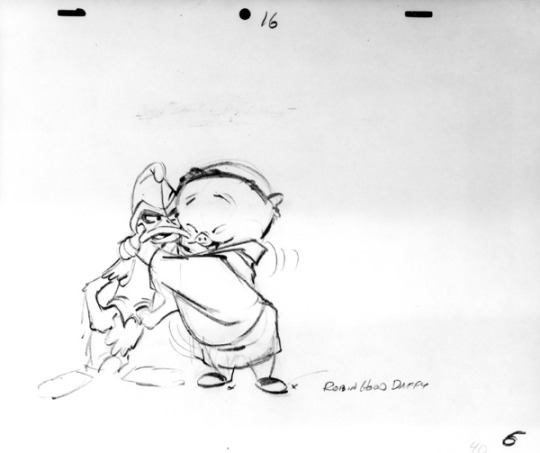

whereas Bob McKimson—i’ve mentioned this before, but i just brought it up yesterday and it’s on my mind. here’s a character layout he did for Fool Coverage (which you should watch very good cartoon), and here’s Rod Scribner’s interpretation of it below…
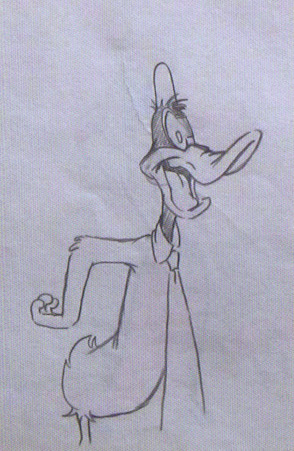

obviously not very loyal. but Scribner’s interpretation is much FUNNIER and works way better in animation than McKimson’s; McKimson’s drawing is still a GREAT drawing and super solid on its on, but definitely a much more conservative approach. you can also see, though, how much of his personal style leeches into his own shorts as well
or this here: John Carey was Bob Clampett’s layout artists for a good portion of his time in the “Katz unit” (aka black and white cartoons), and also animated this very scene he laid out. the two drawings are practically indistinguishable, but there are definitely minor differences. he dictates how the scene is to look


i’ve mainly been talking about character layout, but here are some background layouts indicating where the characters are to fit in the shot as well. this is more all encompassing.
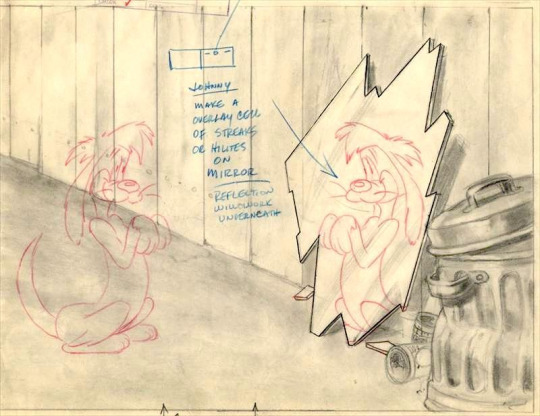

the credits on LT shorts are such a continuous melting pot of nonsense for many reasons, and one of it is because it took until… 1945? 1946? i think ‘45, for them to credit the layout artists… and background artists (who rendered and painted the BG layouts)... and Mel Blanc. and so this is sort of where my knowledge flounders a bit. we know that Maurice Noble was Chuck Jones’ BG layout guy in the ‘50s, and we know Chuck did all his own character layouts. that’s fine enough. but i have no idea, if, say, was John Carey doing background layouts as well in Clampett’s cartoons? was it his background painter, Dick Thomas? Clampett himself mentioned doing the layouts on A Tale of Two Kitties, and the staging of the short in that one definitely has some very warped and drastic angles not usually found elsewhere, so it’s safe to assume he was working on BG layouts in that. but where is the line drawn?? who is responsible for what?
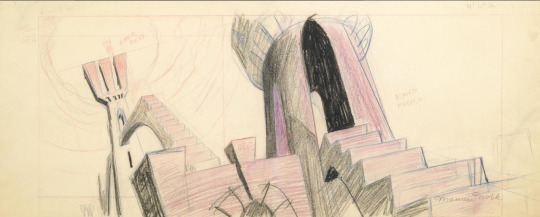

thanks to Warner’s bunk credit system it’s been difficult to piece together. a lot of very talented artists that worked on these shorts never got their credits or dues. everyone knows “oh yeah, Chuck Jones’ shorts in the ‘40s are really stylized and flat.” but do they know the name John McGrew? Bernyce Polifka? Eugene Fleury? all of whom were a part of establishing this style, but also maintain independent subtleties to their own cartoons they worked on? how do Fleury’s paintings based off of McGrew’s layouts in The Case of the Missing Hare or The Aristo-Cat differ from Polifka’s paintings based off of McGrew’s layouts in Wackiki Wabbit and Tom Turk and Daffy?
i’m going off on a tangent, but my point stands in that it’s a very complicated, multifaceted aspect of the animation process that doesn’t have one meaning. it impacts so many different aspects and even how it impacts or WHAT it impacts differs. basically, it just sets the stage for how the scene looks in the final animation, whether it be where the characters and camera are positioned, how the characters look or how the backgrounds look. think of it as the cartoon’s blueprint.
68 notes
·
View notes
Photo
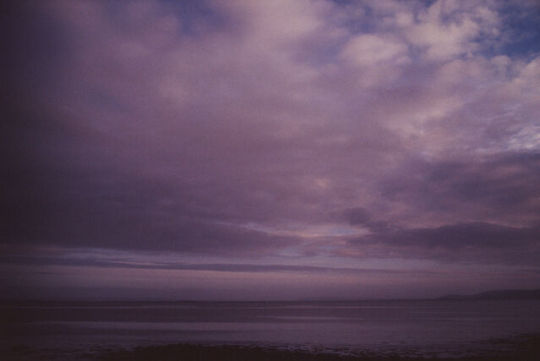
Nan Goldin
Lavender Landscape, 2002
Inkjet print on fine art paper, framed
30 7/10 × 45 7/10 × 2 in | 78 × 116 × 5 cm
142 notes
·
View notes
Text
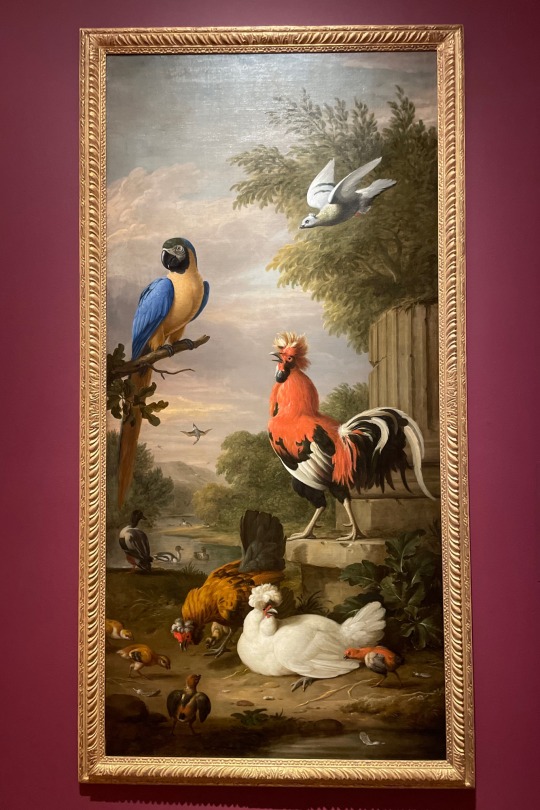
Jakob Bogdani (Hungarian, c.1660-1724)
Asian Silkie Fowls and South American Parrot in an Imaginary Landscape, c. 1700-10
Oil on canvas, 86 1/2 x 45 1/4 in
Virginia Museum of Fine Arts
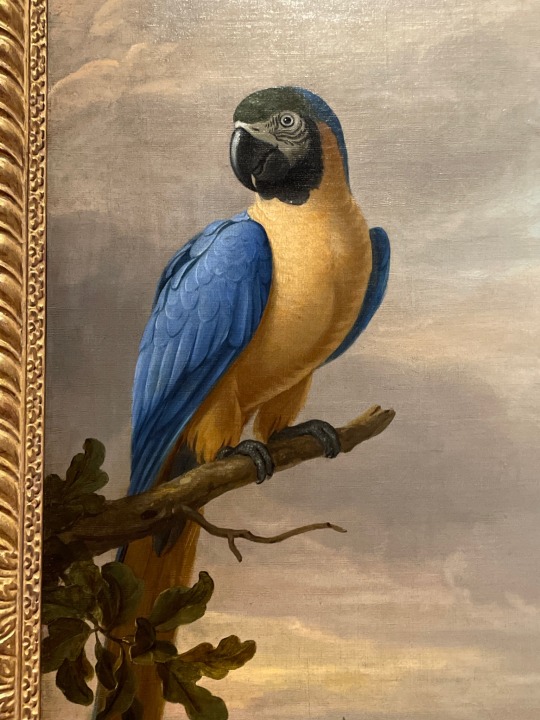
🆔 the “South American Parrot” is a Blue-and-Yellow Macaw (Ara ararauna)

“Bogdani specialized in animal painting in an era when many wealthy Europeans paid large sums of money to obtain rare birds and other seemingly exotic animals from the far corners of the globe. As colonial empires were expanding at the turn of the 18th century, the traffic in species from remote locations was just another facet of the general fashion for foreign goods, such as food and luxury items, that asserted the international pretensions of the ruling classes of Europe.
As an artist who made his career in an international context, Bogdani was truly a man of his time. He was born in Hungary, but he established his reputation as a painter in Amsterdam before relocating to England toward the end of the 168os. This painting is characteristic of his English period and exhibits a familiarity with the subject matter that was gained by his close study of the collection of exotic birds amassed by the dukes of Marlborough. The inclusion of a macaw from South America and a family of silkie fowls from the Far East points to the extensive colonizing ambitions associated with the fascination for the exotic at the dawn of the so-called Enlightened Age.”
#animals in art#european art#museum visit#birds in art#bird#birds#parrot#macaw#blue-and-yellow macaw#Jakob Bogdani#18th century art#painting#oil painting#ID#VMFA#Virginia Museum of Fine Arts#menagerie#chicken#silkie fowl
22 notes
·
View notes
Note
Can we have some facts about our stepmother.
sure thing... here we go!
Kassandra
is 45 years old, 1,72m (5'6"), lean / athletic figure, platinum straight hair, shoulder length, light blue eyes
clothing style: tailored elegance, dark colour palette, statement accessories, luxury brands, high heels, versatile dresses, fine jewelry, minimalist make up, confidence and grace, with attention to detail
enjoys traveling for landscape, culture and history & arts of different kinds, e.g. museums, opera, theatre, ballet
born and raised in Germany
moved to the States to attend Stanford Graduate School of Business
has no own biological children
fell deep and hard for your dad
returned to Germany after the breakup
works now at a global company with their headquarter in Hamburg, Germany
lives with her partner Manfred von Kulversteyen in a multi-level city villa in Hamburg
Did I miss anything?? LMK!
18 notes
·
View notes
Text
Exhibition Review
Ajyal Group exhibition
The exhibition was held under the patronage of H.E Shaikh Rashid bin Khalifa Al Khalifa, Chairman of National Council Arts and Honorary President of Bahrain Arts Society, In collaboration with the Supreme Council for Women including a variety pf wonderful works by 45 artists.










Bahrain was one of the first countries in the gulf region where fine arts emerged, dating back to early twentieth century. The fine art movement was influenced by the country’s rich cultural heritage and openness to various cultures. These initiatives were founded by a group of artists who were inspired by the island’s local environment such as sea and diving. The early artworks were developed using available tools and materials that could have been sourced at the time to produce their artwork. The themes of these artwork were often based on field visits and live drawing of landscapes, and scenes of daily life such as traditional clothing, crafts, folklore stories and events.
The Bahrain Fine Arts Society, since its establishment in 1983, has had an active role in supporting Bahraini art and artists locally and abroad by hosting exhibitions, workshops and lectures for various Bahraini artists, as well as by promoting Bahraini artists in international exhibitions.
All of this culminated in the creation of a unique art scene - the impact of which we witness today with its artistic, intellectual and cultural dimensions.
This exhibition, which coincides with the 40th anniversary of the establishment of the Bahrain Arts Society, aims to highlight the Society's contribution over the years in fostering a fertile environment to create dialogues between the works of artists of various generations. This is evident by the influence of generations of Bahraini artists in terms of subjects, themes and palettes.
This exhibition celebrates the Bahraini artist and generations that had and continue to have an impact on the Bahrain art scene
@patbarak @uob-funoon
#exhibition#art#art gallery#artist#painting#uob#uob funoon#concept art#acrylic painting#oil painting
9 notes
·
View notes
Text
Imperial Avenue: The Ideal Choice for Families Seeking High-End Living
Imperial Avenue is the epitome of luxury living in the heart of Downtown Dubai. Developed by Shapoorji Properties, this stunning high-rise boasts 45 floors with 5 podium levels and 13 high-speed elevators taking you to decadently finished 1,2 and 3-bedroom residences or 4 and 5-bedroom podium villas with private pools.
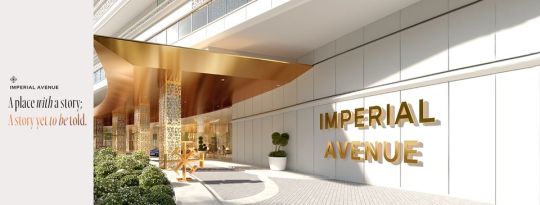
The contemporary and sleek architecture accompanies spacious balconies that offer breathtaking views of the city skyline and iconic Burj Khalifa and the entire Downtown skyline. Each apartment at Imperial Avenue Downtown Dubai has been crafted to perfection, featuring high-quality finishes and modern fixtures.
Residents at Imperial Avenue can enjoy an array of amenities designed for ultimate relaxation and entertainment. Take a dip in either one of two infinity pools or unwind in the Jacuzzi while taking in panoramic views of Dubai's vibrant landscape. Other facilities include a state-of-the-art gymnasium, steam room, two indoor & outdoor children’s play areas, and much more.
What sets Imperial Avenue apart from other developments is its prime location right in the centre of Downtown Dubai. Just minutes away from major attractions like Dubai Mall and Burj Khalifa Park, it is an ideal choice for families seeking a cosmopolitan lifestyle experience.
Imperial Avenue offers unmatched luxury living coupled with first-class amenities that cater to every need imaginable - making it one of the most sought-after addresses for apartments for sale in Downtown Dubai!
The Heart of Dubai
Imperial Avenue boasts an enviable location at the heart of Downtown Dubai, an in-demand location for luxury apartments in Dubai. The neighbourhood is within close proximity to renowned landmarks, including Burj Khalifa, Dubai Opera, Dubai Fountain, Museum of Future, Green Planet, Dubai Frame and Dubai Mall.
Residents even enjoy easy access to a wide array of shopping destinations, ranging from high-end designer boutiques to more affordable fashion outlets. Fine dining options are also aplenty in this bustling area, with numerous Michelin-star restaurants like Ristorante by Niko Romito, Stay by Yannick Alleno, Tresind Studio, Armani, etc., serving up delicious cuisines from around the globe.
For families with young children, Downtown Dubai offers plenty of options for entertainment and education. There are several renowned international schools located within close proximity to Imperial Avenue, like JSS Private School, Dubai International School, and more on top of that, there are many family-friendly activities such as KidZania and the Dubai Aquarium & Underwater Zoo too.
The location also offers excellent connectivity via major highways and public transportation links. With its central location, residents can easily travel throughout Dubai while enjoying stunning views of the skyline along the way. Whereas if they wish, they can take the Sheikh Zayed Road, which connects the city to Abu Dhabi.
The Amenities: A Modern Oasis of lifestyle experiences
The two outdoor areas around the infinity pools on the 26th and 9th floors are perfect for relaxing and unwinding after a long day, with stunning views overlooking the iconic Burj Khalifa. Imagine taking in the sunset from your very own infinity pool - it's truly an experience like no other.
For those who enjoy staying fit and active, there's a state-of-the-art gym on-site equipped with all the latest equipment. And if you prefer to exercise outdoors, you can take advantage of the jogging track around Imperial Avenue or play a game of squash on their court.
But that's not all - there are also plenty of spaces for socialising and entertaining guests, like an A/V room for movie nights and a Multipurpose Hall for large parties!
And when it comes to convenience, Imperial Avenue has got you covered too. With its own retail and supermarket located on the ground floor along with several retail outlets nearby, including City Walk Mall, just minutes away by car or foot - everything you need is right at your fingertips.
The Homes: Immaculately crafted residences
Imperial Avenue is a true testament to luxury living in Downtown Dubai, and the homes are no exception. Each residence has been immaculately crafted with the finest materials and attention to detail.
The apartments for sale in downtown Dubai range from 2-bedroom to 4-bedroom flats near Burj Khalifa. You can choose from various options as per your family size or preference. The rooms are spacious and designed with modern aesthetics, providing an open and comfortable atmosphere perfect for relaxation.
The kitchen is well-appointed with state-of-the-art appliances, sleek countertops, and ample storage space, making it easy to cook delicious meals daily. The bathrooms feature designer fixtures that complement the elegant design of each home.
Moreover, residents can enjoy breathtaking views of the iconic Burj Khalifa through their apartment's floor-to-ceiling windows. It's almost like having a private viewing platform right at your doorstep!
Whether you're looking for a cosy one-bedroom apartment or need more space for your growing family, Imperial Avenue offers luxurious living spaces suited to every lifestyle requirement.
Why Imperial Avenue is the Ideal Choice for Families Seeking High-End Living
With its prime location, modern amenities, and immaculately crafted residences, it offers an unparalleled lifestyle experience that is hard to find elsewhere.
Whether you are looking for a 2-bedroom apartment or a spacious 4-bedroom one facing Burj Khalifa, Imperial Avenue has something for everyone. From state-of-the-art fitness centres and swimming pools to children's play areas and a grand landscaped podium, plenty of facilities are available for residents of all ages.
To sum it up, Imperial Avenue offers luxury apartments in downtown Dubai that cater perfectly to families who value quality living standards with proximity to all essential businesses & services nearby. So if you're looking for an exceptional lifestyle experience in the heart of the city, then look no further than Imperial Avenue!
#apartments facing burj khalifa#residential projects in dubai#imperial avenue downtown dubai#top developers in dubai#best real estate developer in dubai
2 notes
·
View notes
Text
Sunrise to Sunset à Montmartre: underrated Paris art destinations

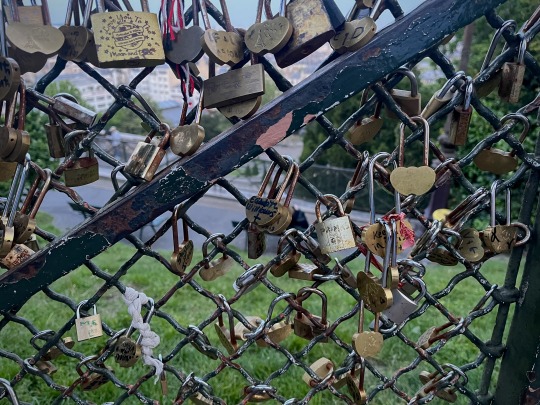
Paris is known for some of the world’s most fabulous art destinations, and my second week in the city certainly paid homage to the fact.
My friends and I started off the week with a visit to the Louvre following Monday’s class. Prior to coming to the museum, I hadn’t realized just how vast it truly was: the Louvre holds over 35,000 works of art, representing 5 out of 7 continents and over 25 centuries’ worth of human creativity. Another thing I hadn’t realized was that there would be a line just to see the Mona Lisa up close(?????). Tired after having seen so much art, my friends and I opted out of this wait on Monday and chose to instead revisit Friday morning. Thanks to the existence of our study abroad students IDs, visiting the museum both times was free, so I did not mind returning solely to see the Mona Lisa.

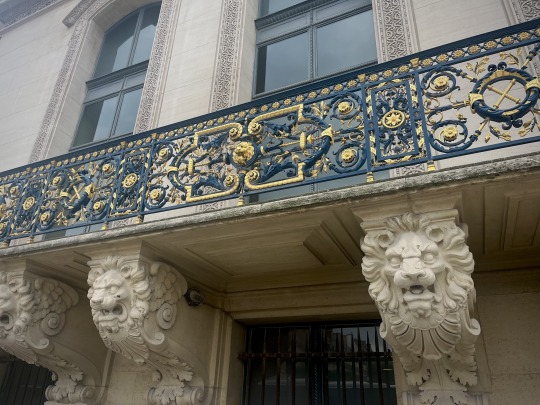
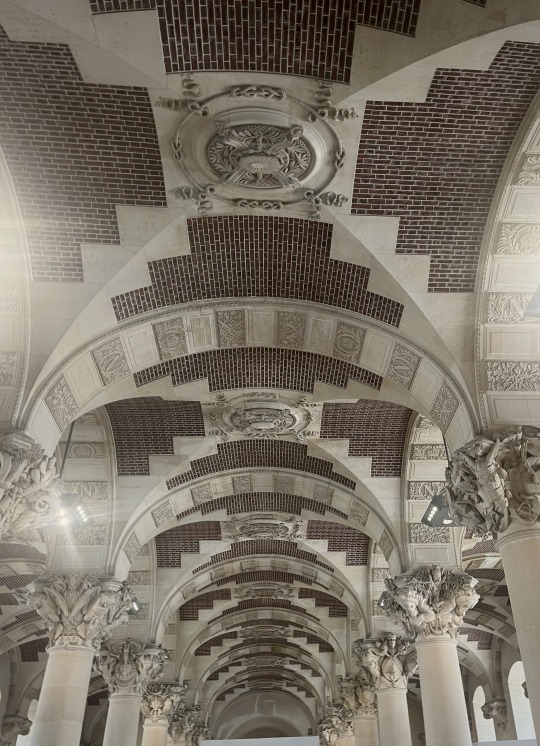
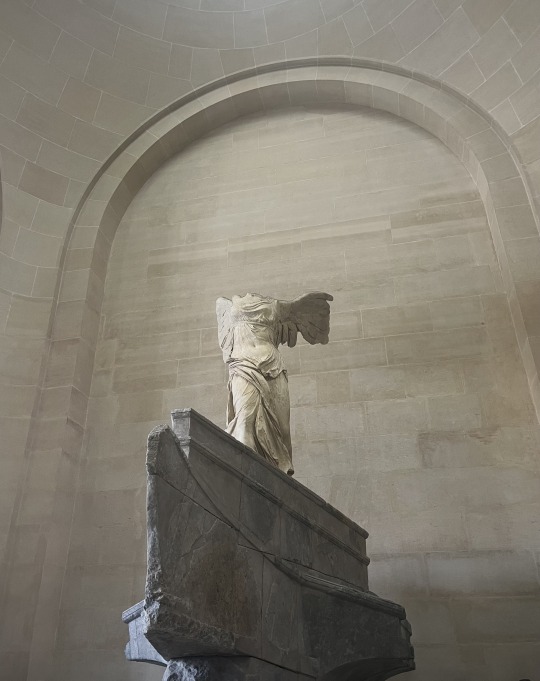

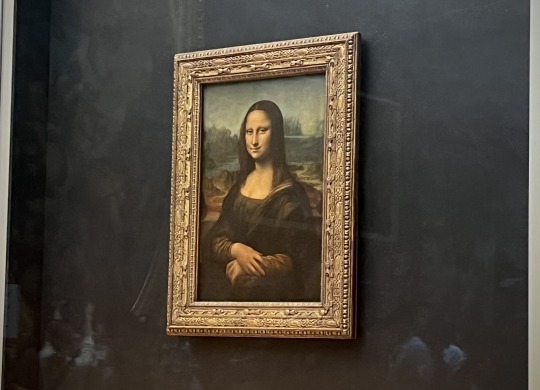
Tuesday, we continued the week’s ‘art’ theme by visiting the Musée d’Orsay, Paris’ train-station-turned-impressionist-museum. This museum houses Claude Monet’s Water Lilies as well as several other notable works from the Impressionist, Neo-Impressionist, and Post-Impressionist eras. I enjoyed the more focused perspective this museum provided in comparison to that of the Louvre and found the stylistic changes from era to era interesting to observe.

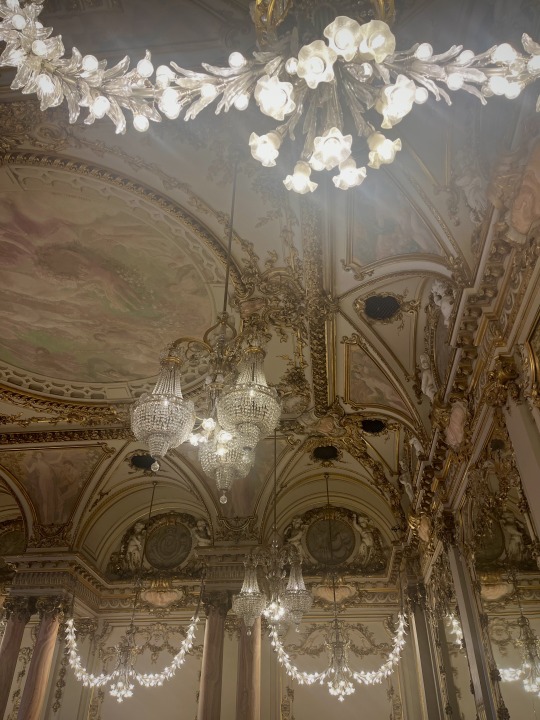


My favorite thing I did this week, however, was not found within the walls of any of Paris’ art museums, but in the heart of one of its most vibrant villages: Montmartre. Montmartre is located in Paris’ 18th arrondissement and most famously houses the Sacré Cœur. In addition to the allure of its beautiful basilica, the atmosphere of Montmartre is unlike that of any other part of Paris. The artists’ quarter of the city, there is no shortage of street artists selling their work or drawing portraits as souvenirs, all while live music from neighboring restaurants fills the air. In the past week I visited Montmartre 3 times, all at different times of day, and found each to be enjoyable. The environment is always lively, and its restaurants and shops seem to be open for longer than those of anywhere else.


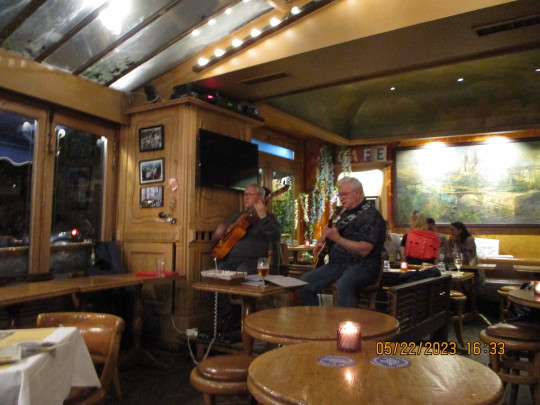

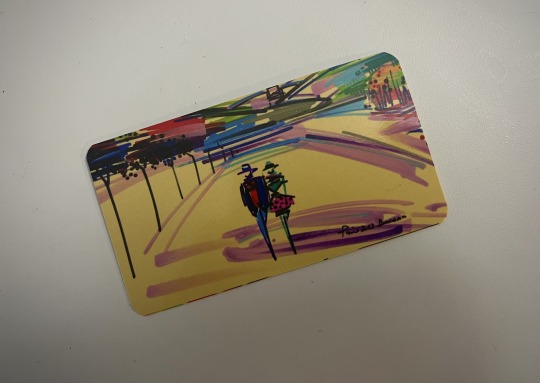
Another of the village’s assets I’d like to highlight is its city view. As indicated by the “mont” in its name, Montmartre is an elevated hill providing a breathtaking look at the city below. My roommate and I took our first visit to Montmartre at sunset, where we observed the city all lit up at night. We enjoyed this so much that we (willingly!!) woke up at 4:45 a.m. this Saturday to see the view once more, this time at sunrise.
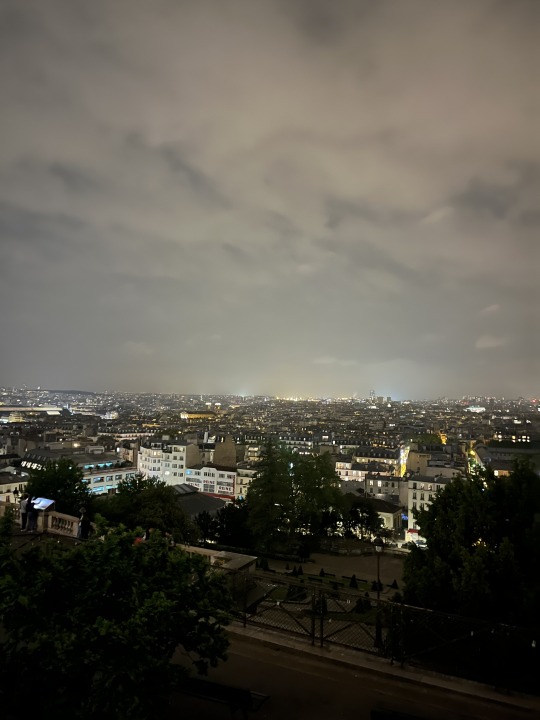
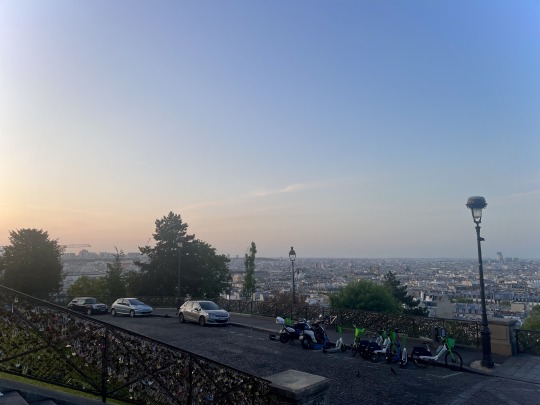
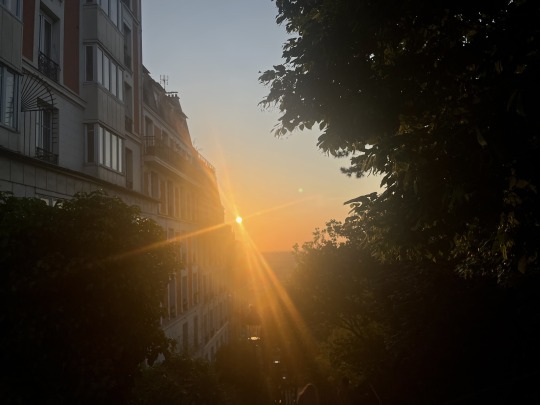
Montmartre is just one example of the many underrated art stops outside of Paris’ most touristy ones. Today, my roommate and I visited another of its lesser-known stops, Petit Palais. This fine arts museum holds art from the reigns of several of the king ‘Louis’s, in addition to numerous sculptures and religious works. Unlike that of the Louvre or Musée d’Orsay, the line to enter was short and it took less than 5 minutes to get in. Additionally, entry is free for all visitors, another perk.


After appreciating its artwork, we made our way to the museum’s garden area. The weather today was beautiful, sunny and perfect for appreciating the ornate building and its landscape. We also enjoyed some drinks and pastries from its café/restaurant, which I'm sure we'll be revisiting to take advantage of its meal combo deals (entrée + dessert for a very reasonable price) and outdoor seating.
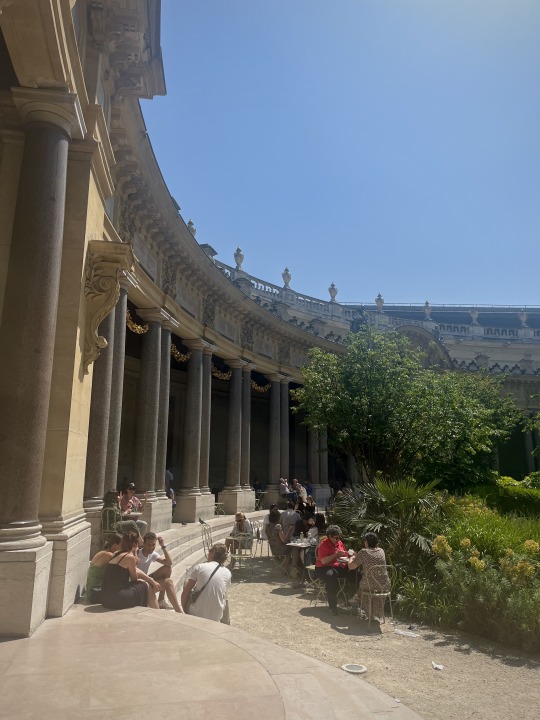


Some other inspiring stops from the week:
-Walking and enjoying the stalls along the Seine, where you can find a variety of posters, pins, and other unique souvenirs
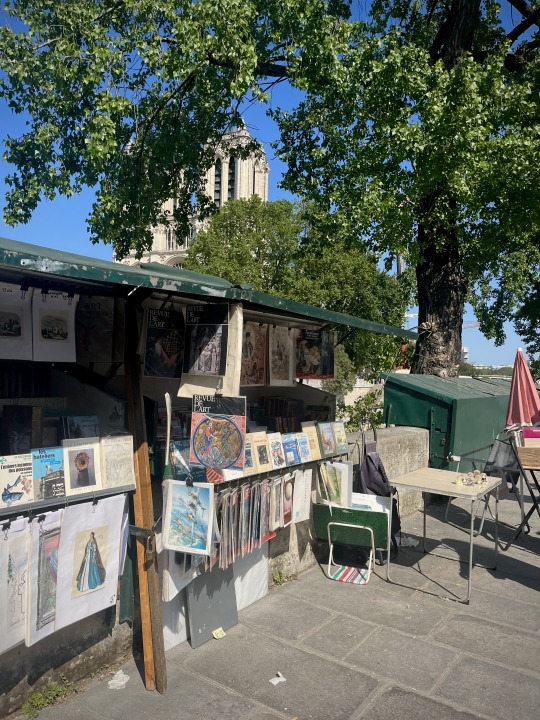
-A trip to une brocante, a flea market, near the métro Bastille, where I found some cool vintage jewelry
(For anyone studying in the area who may be interested, a TikTok user I follow suggested this website to locate upcoming brocantes: Brocante et vide-grenier Paris (75000) - Brocabrac)

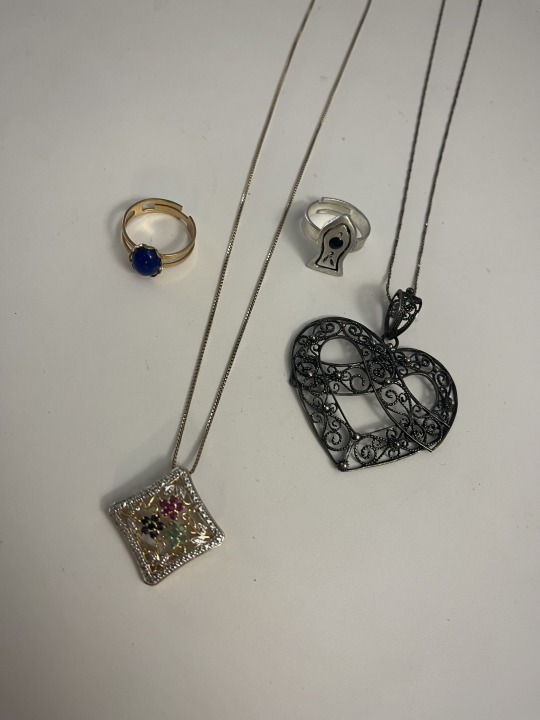
-Brazilian coffee at Brigadeiro d’Alis, a South American-style coffeeshop on our way to class

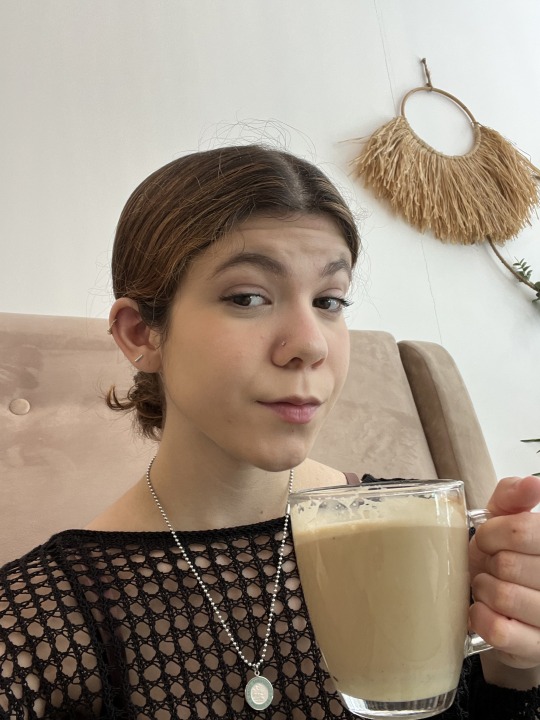
All in all, as I’ve started to run out of the more “touristy” things to do in Paris, I’m enjoying becoming more creative and present in my daily planning. Paris is far from boring, and I’m finding that there’s so much more to do and see than its most popular attractions. I can’t wait to see where this mindset takes me in the weeks to come!
As for classes, my second class starts tomorrow, so wish me luck and expect an update next week!
À bientôt !!
Hannah Bernardi
First-year Engineering
Engineering in Paris, France
2 notes
·
View notes
Text

The Upper Ipswich River, c. 1920
Philip Little
Oil on canvas
Dimensions:
45 1/2 x 45 1/2 in. (115.57 x 115.57 cm) (canvas)
52 5/8 x 52 1/4 x 3 1/2 in. (133.67 x 132.72 x 8.89 cm) (outer frame)
Born in Swampscott, Massachusetts, Little studied art at the School of the Boston Museum of Fine Arts. Following his studies he married and moved to Salem where he shared his first studio with his close friend and American Impressionist, Frank Benson. Financially independent, Little was able to pursue multiple responsibilities - serving as a civic leader of Salem and a curator of the Essex Institute - while pursuing his passion for painting whenever he had a free moment. Consequently, the landscape of his environs served as a mainstay of his artistic output.
The Upper Ipswich River reveals Little as a master of his medium (as witnessed in the variety of brushwork) and an astute colorist. This autumnal scene was exhibited in 1915 at the Panama-Pacific International Exhibition in San Francisco where it received a silver medal.
#Philip Little#art#painting#Minneapolis#minneapolis institute of art#one of my favorite paintings#not currently on display at the mia#but man#this one is absolutely massive and the detail is astounding
5 notes
·
View notes
Text
Artist Research 28/02/23

Michael Canning
While researching for my project on Murmuration’s, Michael’s paintings were mentioned to me as he uses birds as a part of his works. His paintings have an incredible level of detail and the work that goes into creating them is exacting.
Michael Canning's artistic style is both deeply rooted in the natural world and rich with a sense of history and tradition. His paintings, which typically feature a single wildflower against a receding landscape, are instantly recognizable and display a level of detail and technical skill that is truly remarkable.
What sets Canning's work apart is the deep sense of reverence and contemplation that he brings to his subjects. Rather than simply painting what he sees, Canning approaches his work as a kind of meditation, a way of focusing attention and contemplating the deeper mysteries of the natural world.
This sense of introspection and contemplation is evident in the titles of his paintings, which are often allusive and tangential, touching on themes like music, memory, and perception. Through his art, Canning invites us to reflect on the nature of time, change, and our capacity for understanding the world around us.
Perhaps most impressive of all is the meticulous care that Canning brings to his work. Each painting is built up over a period of years, with layers of oil and wax, earth, soot, and ash, creating a sense of depth and texture that is truly unique.
Overall, Michael Canning is an artist whose work is deeply rooted in the natural world, but which also speaks to broader themes of history, tradition, and human experience. His art is a testament to the power of contemplation, introspection, and the enduring mysteries of the world around us.
Even though he uses bird’s motion only as part of the backdrop to his flowers, however, his attention to detail and the fluidity of the birds are remarkable. Although Michael's paintings are most commonly associated with depictions of wildflowers and plants, his use of birds in flight is a key part of his artistic vision. While it's impossible to say for certain what motivates his use of birds, there are several possible explanations based on what we know of his work.
One possibility is that he sees birds as a way to bring movement and energy to his paintings. Because his paintings often depict very still and static scenes, the inclusion of birds in flight can help to create a sense of dynamism and vitality. By adding this element of motion, Canning's paintings are able to capture a more complete sense of the natural world.
Another possibility is that Michael sees birds as a metaphor for the human experience. Birds in flight can represent freedom, escape, and the pursuit of a higher goal. By including them in his paintings, he may be trying to capture the sense of transcendence and possibility that comes with the act of looking closely at the natural world.
It's worth noting that birds are a common motif in art and literature, and have been used to represent a wide range of themes and ideas. From the romantic poetry of Shelley and Keats to the ornithological illustrations of John James Audubon, birds have long been seen as symbols of grace, beauty, and the sublime. Given this rich tradition, it's possible that Michael simply sees birds as an important part of the natural world that deserves to be celebrated and explored in its own right. I hope that I might get the opportunity to answer some of these questions.
MICHAEL CANNING
SIXES, 2017-2020
Acrylic, gouache, pencil, charcoal and ash on paper.
Signed in pencil.
116.5 x 89.2 cm (45 7/8 x 35 1/8 in)
I was particularly struck by this painting. The attention to detail is amazing. The plant appears like a great tree in a savannah setting with a burnt sky. The top of the plant is rendered in fine detail and seems to be catching the sun at its top. The way the plant reflects the background, changing colour and almost ageing as we go down into the dark. The title is intriguing!
I got an opportunity to talk to Michael about his painting and in particular this painting “Sixes”. He told me that it related to the cricket score, and also to measurements. we talked about his early experience and how he had started in sculpture. He said this influenced how he approached his art and how he brought a three dimensional quality to his paintings.
He mentioned another artist I hadn’t seen, Walton Ford and I had a look for his work. I was particularly struck by a painting that I think is entitled “Falling Bough”. This is of a branch of a tree that has broken off apparently being held by a murmuration of birds. There is great detail and a striking use of colour in this painting, and as sense of tension that we are not sure what the outcome might be in the surreal image we are watching.

(“Art in Focus,” n.d.)
(“Michael Canning, Listening Love, 2013 - 17,” n.d.)
(“Michael Canning,” n.d.)
(“Stoney Road Press | Michael Canning,” n.d.)
(“Bardo, False Chronicle of a Handful of Truths,” 2023)
(“Falling Bough, by Walton Ford - VoCA | Voices in Contemporary Art,” 2019)
3 notes
·
View notes
Text
Update Time! Last week was kind of wacky lol
-Sliced one of my ring finger knuckles pretty good, its still stiff but it's getting better.
-Ended up playing a lot of video games (like POOLS) for that reason, since most don't require using that finger...lol
-Watched a bunch of movies - Furiosa (it was Fine, Fury Road was better), and both of the Spiderverse movies (never seen before, they were great)
-My birthday was also last week so I hatched all the eggs I had been collecting all year on Flight Rising - It ended up being like 45 eggs or something like that between NOTN, gathering, and freebie breed releases. Sheesh! Most of them were expectedly meh, but I had a handful of cool ones, plus one double. The double is seafoam/seafoam/sand so it's a little weird but I think it's still interesting.
- I'm now officially halfway through my current year drawing challenge! Which is a landscape/scenery study a day, aaand also remembering why I don't do these challenges every year. hhggggHHH. Even at a small scale it's hard to keep up. 😅 Keeping some mental notes for things I want to do differently next time. Anyway one of these days I want to do a flipthrough video...either soonish or at the end of the year
Uhhh what else
-Happy artfight month! But I see the website is down 🤣 which I think might be normal
-In Worldbuilding- I don't know why I decided to have a bunch of higher beings that can only be fully perceived by each other but not by regular beings. I want to do some art/explaination sometime but this is making it really difficult to find acceptable analogies because we wouldn't really be able to perceive them correctly either 🤣 Seriously whyyy did I do this
0 notes
Text
Compliance Matters: Elevating Pharma Marketing Through Ethical Practices
In the pharmaceutical industry, compliance isn't merely a legal obligation; it's a fundamental pillar ensuring trust and safety in healthcare marketing. Enter ZING, a groundbreaking solution designed to streamline Pharma Marketing Compliance. ZING provides a robust engagement suite enabling secure, compliant communication, allowing pharmaceutical companies to effectively engage healthcare professionals (HCPs) while adhering to stringent regulatory standards.
What is Pharma Compliance?
Pharma compliance involves adhering to legal, ethical, and regulatory standards established by governing bodies to ensure that promotional activities and communications about pharmaceutical products are accurate, responsible, and focused on patient safety. These guidelines govern advertising, product disclosure, and interactions with HCPs, maintaining public trust and integrity within the pharmaceutical industry.
Why Pharma Compliance Matters
Understanding the landscape of regulations is vital for anyone involved in Pharma Marketing Compliance. Here are some key guidelines and standards:
FDA Guidelines: The Food and Drug Administration (FDA) sets pivotal standards for pharma marketing in the U.S., requiring all marketing efforts to comply with rigorous safety and efficacy criteria.
DOJ's ECCP: The Department of Justice's Evaluation of Corporate Compliance Programs (ECCP) emphasizes the importance of ethical conduct in pharma marketing.
GDPR: The General Data Protection Regulation (GDPR) governs the handling of personal data within the EU and EEA, demanding clear consent for data processing and ensuring data security.
Challenges in Achieving Pharma Compliance
Navigating the world of Pharma Marketing Compliance can be complex due to several challenges:
Complex Regulations: Laws vary widely by country and region.
Training Needs: Staff must be continuously trained in the latest regulations.
Digital Communication: Ensuring all messages meet compliance becomes a significant challenge.
Consequences of Non-Compliance: Non-compliance can lead to hefty fines and legal action.
The Importance of Pharma Compliance
Adhering to compliance in pharmaceutical industry is crucial for several reasons:
Patient Safety: Accurate communication ensures that HCPs and patients receive the right information.
Building Trust: Compliance demonstrates a commitment to ethical practices and respect for patient well-being.
Competitive Advantage: Prioritizing compliance positions companies as leaders in ethical marketing.
How ZING Facilitates Compliance and Simplifies Communication
ZING makes compliance straightforward and efficient:
Automated Compliance Checks: ZING reviews communications for compliance automatically.
Data Protection: ZING protects sensitive information with state-of-the-art encryption.
Audit Trails: Every action and communication is logged, simplifying compliance reporting.
Benefits of SMS Communication with ZING
Direct and Immediate: SMS messages reach HCPs directly, facilitating timely engagement.
High Open Rates: 98% of text messages are opened, typically within 3 minutes of delivery.
Strong Conversion Rates: Text messages boast an average response rate of 45%.
Boosting Sales: SMS marketing campaigns can increase sales by up to 20%.
Simple Yet Secure: ZING’s SMS platform combines simplicity with security.
Conclusion
By placing compliance in pharma marketing strategies, companies can ensure their efforts contribute positively to public health, build trust, and secure a competitive edge. With ZING, achieving compliance becomes less about navigating complexity and more about effective, impactful communication. This innovative solution ensures engagements with HCPs are not only compliant but also impactful, fostering trust and adherence to the highest standards of communication.

0 notes
Text
Luxury Beyond Limits: The Top 10 Most Expensive Homes on the Market Right Now
In the world of luxury real estate, opulence knows no bounds. Across the globe, magnificent homes boasting exquisite architecture, sprawling estates, and unmatched amenities define the pinnacle of high-end living. As we explore the top ten most expensive homes on the market, we unveil not just homes but masterpieces that offer a glimpse into the lifestyles of the ultra-wealthy. From private islands to historic castles, these homes are more than residences—they are luxury landmarks.
1. The Billionaire's Haven: Bel Air, Los Angeles
Perched atop the prestigious hills of Bel Air, this modern marvel stands as a symbol of contemporary luxury. It is priced at $250 million and features a panoramic view of Los Angeles, stretching from the San Gabriel Mountains to the Pacific Ocean. The estate spans over 40,000 square feet and includes a private theater, bowling alley, and a collection of exotic cars valued at over $30 million.
2. The Great Island Escape: Private Island, Bahamas
Offered at $200 million, this private island is the epitome of privacy and exclusivity. With over 700 acres of lush landscapes surrounded by crystal-clear waters, the island boasts its airstrip, a harbor capable of docking large yachts, and several luxurious villas dotted across the shoreline, each designed with an elegant blend of traditional and modern styles.
3. The Royal Manor: London, England
This historic manor is on the market for $180 million in the heart of London's prestigious Knightsbridge neighborhood. It features 55,000 square feet of living space with 45 bedrooms, an indoor swimming pool, a private movie theater, and a grand ballroom. The home’s interiors are adorned with priceless artworks and antiques, reflecting its centuries-old heritage.
4. Villa Les Cèdres: French Riviera
Nestled along the stunning coastline of Saint-Jean-Cap-Ferrat, Villa Les Cèdres is valued at $170 million. The property dates back to the 19th century and spans approximately 35 acres of gardens, among Europe's most beautiful. The villa covers 18,000 square feet and includes 14 bedrooms, a chapel, a winter garden, and an Olympic-sized swimming pool.
5. The Sky Penthouse: Monaco
At the apex of the luxurious Odeon Tower in Monaco, the Sky Penthouse offers a life above the clouds for $155 million. This multi-level penthouse features a private elevator, an infinity pool with a slide descending from a dance floor above, and floor-to-ceiling windows that offer unobstructed views of the Mediterranean Sea.
6. The Mountain Retreat: Aspen, Colorado
This majestic mountain estate in Aspen is listed for $140 million. It spans over 25,000 square feet and sits on 350 acres of pristine land. The property includes private ski slopes, a grand lodge with massive stone fireplaces and exposed wooden beams, and a charming guesthouse.
7. The Urban Palace: New York City, New York
In the heart of Manhattan, this $135 million penthouse in the iconic Woolworth Building offers a rare combination of architectural grandeur and modern luxury. The penthouse occupies the entire top five floors, featuring 360-degree views of the city skyline, a private elevator, and a 500-square-foot observatory.
8. The Oceanfront Estate: Palm Beach, Florida
This breathtaking oceanfront estate in Palm Beach is on the market for $130 million. It boasts direct beach access, over 20,000 square feet of living space, lush tropical gardens, and a 14-car garage. The interior showcases luxury with custom marble floors, hand-painted ceilings, and state-of-the-art security systems.
9. The Country Castle: Loire Valley, France
For those with a penchant for history, this restored castle in the Loire Valley is available for $125 million. It features 30 bedrooms, a vineyard producing fine wines, and extensive grounds, including several ponds, a forest, and a helipad.
10. The Modernist Masterpiece: Beverly Hills, California
In the exclusive enclave of Beverly Hills, a modernist masterpiece designed by a renowned architect is priced at $115 million. The home spans 24,000 square feet and features an impressive array of amenities, including an automated 2-story car lift, a state-of-the-art home theater, and an art gallery.
These homes are not just living spaces but palatial sanctuaries offering unparalleled luxury and privacy. They are monuments to our time's architectural, artistic, and technological achievements, standing as private retreats for the world’s most affluent individuals. Each property tells a story of grandeur and exclusivity, making.
1 note
·
View note
Text
The Appeal of Carbon Facials and Nail Workmanship Administrations in Ludhiana
Introduction:
Ludhiana, a city pulsating with style, invites you to embark on a journey of beauty and self-expression. This article explores the enchanting experiences offered by Carbon Facials and Nail Art Services in Ludhiana, where skincare meets innovation, and nails transform into canvases of artistic expression.
Carbon Facial in Ludhiana: Illuminating Skin with Modern Elegance

Discovering the Marvels of Carbon Facials:
Carbon Facial in Ludhiana studios introduce a contemporary skincare approach that combines science with indulgence. The Carbon Facial, also known as the Hollywood Peel or Carbon Laser Peel, uses a layer of liquid carbon and laser technology to rejuvenate the skin, addressing concerns such as uneven skin tone, enlarged pores, and fine lines.
Key Features of Carbon Facial Studios:
Skin Rejuvenation: Targeted treatment for skin rejuvenation, promoting a smoother texture and a more youthful appearance.
Pore Size Reduction: Effective in minimizing enlarged pores and controlling excess oil production.
Even Skin Tone: Addresses pigmentation issues, promoting a more even and radiant skin tone are the results of Carbon Facial in Ludhiana.
Minimal Downtime: A non-invasive procedure with minimal downtime, making it suitable for those with busy schedules.
FAQs about Carbon Facial in Ludhiana:
Q1: How long does a Carbon Facial session usually last?
A1: A typical Carbon Facial in Ludhiana session lasts around 30 to 45 minutes, making it a convenient option for quick and effective skincare.
Q2: How many sessions are recommended for optimal results?
A2: The number of sessions can vary based on individual skin concerns, but many clients see noticeable improvements after a series of treatments.
Nail Art Services in Ludhiana: Elevating Nails to Artistic Heights

Exploring the Craft of Nail Art Services in Ludhiana:
Ludhiana’s Nail Art Studios are havens of creativity, where skilled technicians transform nails into miniature masterpieces. Whether seeking intricate designs, trendy patterns, or personalized themes, nail art services offer a canvas for self-expression.
Key Features of Nail Art Services:
Custom Designs: Skilled nail art services in Ludhiana who can create custom designs, ranging from delicate florals to bold geometric patterns.
Variety of Techniques: Utilization of various techniques, including freehand painting, stamping, and 3D embellishments.
Seasonal Themes: Offering nail art services tailored to seasonal trends and special occasions, ensuring nails are always on-trend.
Nail Health Focus: Prioritizing nail health with proper preparation, application, and aftercare techniques to maintain the integrity of natural nails.
FAQs about Nail Art Services in Ludhiana:
Q1: How long does a typical nail art session take?
A1: The duration of a nail art services in Ludhiana session can vary based on the complexity of the design, but it usually ranges from 1 to 2 hours.
Q2: Can clients bring their nail art design ideas?
A2: Absolutely! Ludhiana’s nail art studios encourage clients to bring their design inspirations, ensuring a personalized and collaborative experience.
Conclusion:
Ludhiana’s beauty landscape is enriched by the modern elegance of Carbon Facials and the artistic flair of nail art services in Ludhiana. These experiences not only offer transformative results but also celebrate individuality, allowing residents to express their unique style in every facial glow and nail embellishment.
0 notes
Text
Jen Orpin
In The Shadows

Jen Orpin lives in Manchester. Her work is held in public and private collections both nationally and internationally.
She has exhibited in London and Seoul among others and was selected for the 2023 Royal Academy Summer Show.

In November 2019 she co-founded Rogue Women and co-curated a group show of 45 female artists from Rogue including invited guest artists from all over the UK. The exhibition then returned in May 2023 with Rogue Women II and in November with a stand at The Manchester Contemporary.
Jen has had two solo shows, one in 2021, a 10 week solo show at the Manchester Modernist Society and her paintings appeared in two publications in conjunction with the Modernist Society and a project called Landscapes of Post War Infrastructure. The second was in March 2023, a three week solo show and four weekend gallery residency at Saul Hay Gallery Manchester.
In May 2021 her motorway paintings featured in the Guardian online and The Observer’s New Review arts and culture magazine and again in Jan 2023 when one of her paintings appeared in the ‘On My Radar’ feature. In Dec 2023 Jen featured on Radio 6Music in the Art Is Everywhere feature.
Jen is an associate member of the Manchester Academy of Fine Arts (MAFA) and can be found on the artists platform Gertrude.
She is currently represented by Saul Hay Gallery Manchester.
Public collections include: Manchester Art Gallery, New Art Gallery Walsall

‘My current practice focuses on one of the fundamental elements of human relationships, connection. This connection can manifest itself emotionally, spiritually and physically. The latter requires us to come together, meet, see and touch each other. This cannot happen without one crucial act, the journey that takes us to them. This, in the most part is achieved by various means and modes of transport.
The one I focus on and have been investigating throughout my painting practice is the journey by car and the relationship we have with the motorway and its landmarks. These visual representations of everyday topographies and the framed view from the car make up and form the basis of memories and nostalgia. The importance of these external landscapes is often mirrored by the internal dialogue of the driver and passenger with the confinements of the car at times offering an intimate confessional space.
The mundanity of these every day actions often belies the truth of deep routed emotions that come with well-travelled routes to the people and places that mean the most to us. In my paintings I aim to portray this feeling, emotionalism is a key element in the success of each one and as a viewer you are forced to look down the road as its sole traveler and undertake each journey as your own. Each bridge or landmark acts as the sitter in the landscape’s portrait, confronting you head on, holding your gaze as your mind travels under and beyond its concrete confinements.
The structures I focus on, often constructed from concrete and metal, brutal in nature, straddle well travelled motorways and roads. Unchanged and built to last, they offer sturdiness and a consistent presence that spans decades. They may be accompanied by the addition of graffiti or nature might have taken hold where possible, only adding to this presence. By documenting and recording these structures using the language of painting and drawing on the traditions of landscape painting, I aim to expand our perceptions and viewpoints and challenge how we look at these structures in our everyday landscapes. ‘
0 notes